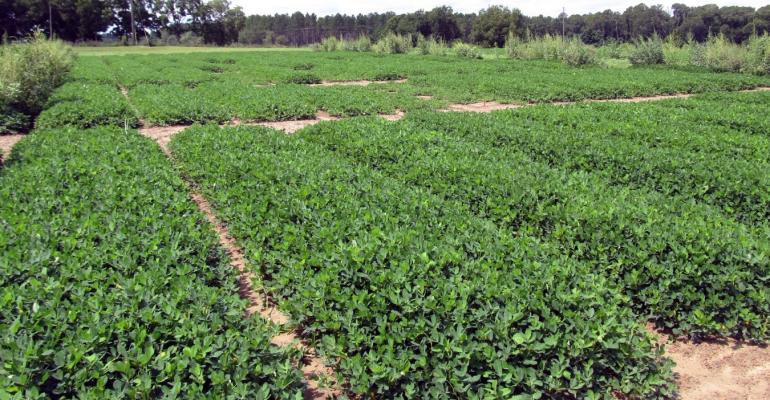Like most of you, I am now in the stage where my herbicide applications are over, and I am managing the peanut crop for insects, disease and water stress (what’s that?) with the hope of making 6,000-plus pounds per acre.
Since there is not much going on in peanut weed control at this time of the year, I thought it might be a good time to make you aware of some the weed-science research that’s currently underway. The whole focus of my program is to try and deliver science-based answers to the myriad of current and future questions asked by county Extension agents and Georgia peanut farmers.
Here are a few interesting projects:
- Peanut Tolerance to Multiple Simulated Exposure Events of Dicamba or Dicamba + Glyphosate. I have conducted a fair amount of research on this topic in the past but have never exposed peanuts to more than one application of dicamba.
- Peanut Tolerance to Metribuzin. I have been recommending metribuzin on soybeans forever because it is cheap, effective, and not a PPO herbicide. But current labels prohibit planting peanuts for 18 months after an application. I am hopeful that this restriction could be shortened.
- Peanut Tolerance to Cadre + 2,4-DB + (Dual Magnum or Zidua) + (Cobra or Ultra Blazer). Growers with ALS-resistance problems would benefit from this 4-way tank-mixture but I need to further confirm crop tolerance.
- Peanut Tolerance to Valor + Dual Magnum Tank-Mixtures Under High Moisture Conditions. Does heavy rainfall after application increase crop injury potential? Cosmetic or real?
- Peanut Tolerance to Brake (fluridone). Brake is currently registered for use in cotton. It would be great to have another herbicide available for use in peanuts that does not have the PPO mechanism of action (WSSA #14). Brake’s mechanism of action is to inhibit the PDS enzyme in carotenoid biosynthesis (WSSA #12).
- Peanut Tolerance to Sinbar (terbacil). Sinbar is a watermelon herbicide that currently has a 2 year rotation restriction for peanuts and many other southern crops.
- Valor (flumioxazin) Formulation Trials. Various formulations of Valor are currently on the market. Are crop response and weed control the same?
- Brake and Anthem Flex (pyroxasulfone + carfentrazone) Efficacy Trials. Can these herbicides be added to and/or replace herbicides in our existing weed control programs?
- Auxin Nozzles for Weed Control in Peanuts. Can the newer auxin nozzles, which produce coarser droplet sizes, be used for weed control in peanuts? Preliminary results over the last few years have been promising. Three large on-farm trials with commercial sprayers and one small plot replicated trial might help me answer this question more definitively in 2018.
Got a few more projects, but that darn Word Nazi is after me again! (No more words for you!) When I start delivering the weed science gospel with my Cackalackian colleague in January, I will fill you in on some of the more promising results.
If there are other weed-science related issues that you would like to see addressed in future research, please let me know. I am appreciative of the financial support of the Georgia Peanut Commission and the agricultural industry whose grant dollars make all this research possible.
As always, good weed hunting!
Credit: www.southeastfarmpress.com

